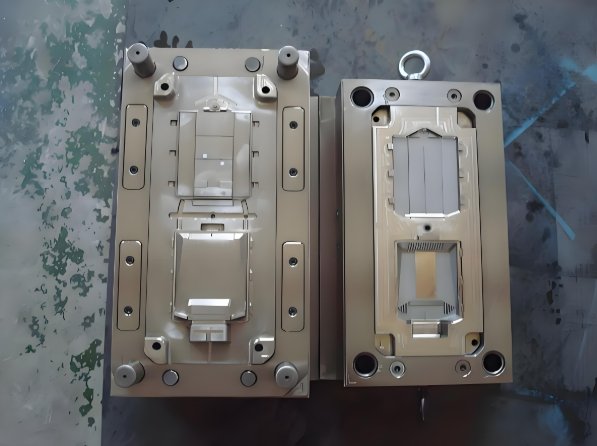
Material selection plays a critical role in electronic injection molding. Thermoplastics and thermosets are the two main categories of plastics used in manufacturing electronic components. Each has unique properties that affect performance, durability, and processing. Mold makers must understand the differences to select the right material.
This article explores the characteristics, applications, and advantages of thermoplastics and thermosets in electronic injection molding.
1. What Are Thermoplastics?
Thermoplastics are polymers that soften when heated and harden when cooled. This process is reversible, allowing them to be reshaped multiple times.
1.1 Key Properties of Thermoplastics
- Recyclable – They can be reheated and reshaped without losing properties.
- Flexible Processing – Easily molded into complex shapes.
- Good Electrical Insulation – Protects electronic components.
- Chemical Resistance – Withstands exposure to oils and solvents.
1.2 Common Thermoplastics in Electronic Injection Molding
1.2.1 Polycarbonate (PC)
- Impact resistant and transparent.
- Used for electronic housings and lenses.
1.2.2 Polyphenylene Sulfide (PPS)
- High heat resistance and chemical stability.
- Ideal for connectors and circuit breakers.
1.2.3 Polyetherimide (PEI)
- Strong mechanical properties and high-temperature resistance.
- Used in insulating components.
1.2.4 Liquid Crystal Polymers (LCPs)
- Low moisture absorption and high precision molding.
- Suitable for microelectronic parts.
2. What Are Thermosets?
Thermosets are plastics that harden permanently after curing. Unlike thermoplastics, they cannot be remelted or reshaped.
2.1 Key Properties of Thermosets
- Heat Resistant – Can withstand extreme temperatures without softening.
- Stronger Structure – Maintains shape under mechanical stress.
- Excellent Electrical Properties – Used in insulating applications.
- Durable and Rigid – Resists warping and deformation.
2.2 Common Thermosets in Electronic Injection Molding
2.2.1 Epoxy Resins
- Strong adhesion and thermal stability.
- Used in circuit boards and encapsulation.
2.2.2 Phenolic Resins
- High dielectric strength and heat resistance.
- Ideal for electrical sockets and switchgear.
2.2.3 Melamine Resins
- Flame retardant and scratch resistant.
- Used in electrical panel covers.
3. Processing Differences Between Thermoplastics and Thermosets
3.1 Thermoplastics Processing
- Heated until soft.
- Injected into molds under pressure.
- Cools and solidifies into final shape.
- Can be reheated and reshaped if needed.
3.2 Thermosets Processing
- Mixed with curing agents before molding.
- Heated and set into a permanent shape.
- Cannot be reshaped after curing.
- Provides higher durability and heat resistance.
4. Applications in Electronic Injection Molding
4.1 Where Thermoplastics Are Used
- Connectors and sockets.
- Protective casings for electronics.
- Circuit board insulation.
- Flexible cables and wiring.
4.2 Where Thermosets Are Used
- High-voltage insulation parts.
- Encapsulation of electronic circuits.
- Electrical switches and transformers.
- Heat-resistant enclosures.
5. Advantages and Disadvantages
5.1 Advantages of Thermoplastics
✅ Recyclable and reusable.
✅ Lightweight for portable electronics.
✅ Flexible and impact-resistant.
✅ Cost-effective for mass production.
5.2 Disadvantages of Thermoplastics
❌ Lower heat resistance than thermosets.
❌ Can deform under extreme stress.
❌ Less rigid compared to thermosets.
5.3 Advantages of Thermosets
✅ Stronger and more rigid than thermoplastics.
✅ High-temperature stability.
✅ Better electrical insulation properties.
✅ Resistant to chemical degradation.
5.4 Disadvantages of Thermosets
❌ Not recyclable due to permanent curing.
❌ More difficult to process.
❌ Higher production costs.
6. How Mold Makers Choose the Right Material
6.1 Application Requirements
- For high-temperature environments, thermosets are preferred.
- For flexibility and recyclability, thermoplastics are better.
6.2 Cost Considerations
- Thermoplastics are cheaper and easier to mold.
- Thermosets require complex processing but offer durability.
6.3 Strength and Durability
- Thermosets are used when long-term performance is essential.
- Thermoplastics are chosen for cost-effective production.
6.4 Environmental Factors
- Thermoplastics are more eco-friendly due to recyclability.
- Thermosets generate waste but provide superior insulation.
7. Future Trends in Electronic Injection Molding
7.1 Sustainable Materials
- Biodegradable thermoplastics are being developed.
- Recyclable thermosets are an emerging innovation.
7.2 Smart Polymers
- Materials that change properties under certain conditions.
- Used in advanced electronic applications.
7.3 Nanotechnology in Molding
- Enhances material strength and electrical properties.
- Improves heat dissipation in electronic components.
Both thermoplastics and thermosets play crucial roles in electronic injection molding. Mold makers must carefully choose materials based on heat resistance, durability, cost, and application requirements.
Thermoplastics offer flexibility and recyclability, making them ideal for cost-effective, mass-produced components. Thermosets provide rigidity and heat resistance, essential for high-performance electronic parts. As technology advances, new materials and innovations will continue to improve electronic injection molding processes.
